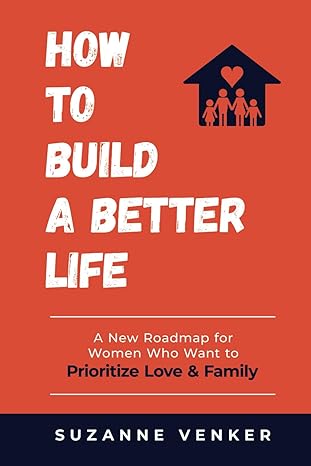Relief Assistance to Vulnerable Women and marginalized People During the Covid-19 Pandemic in Nepal
The global outbreak of the COVID-19 pandemic, which began in late 2019, has put humanity and civilization in an unthinkable and challenging scenario. This crisis has harmed hard-won development gains while exacerbating pre-existing and chronic issues, including poverty, hunger, and unemployment. On March 24, 2020, the Government of Nepal (GON) announced a nationwide lockdown, affecting all social and economic activity in the country. The restrictions were lifted in the summer of 2020, followed by a significant drop in COVID-19 cases. In FY 2019/20, the economy decreased by 2.09 percent, compared to the government’s target of 8.5 percent. Unorganized occupational groups were adversely affected by the lockdown, resulting in food insecurity in some parts. It left a situation where most wage-earners, impoverished and vulnerable households, had no choice but to rely on the government’s supports.
COVID-19 pandemic has adverse impacts on health systems, livelihoods, poverty, employment, and the economy mitigated. Women were one of the big segments of society, largely impacted by widespread gender and caste-based discrimination. Women during the Covid-19 pandemic has high chances to suffer from multiple discrimination based on gender, caste ethnicity and geographic remoteness. Patriarchal society and deep-rooted social and cultural norms form a strong basis for discrimination against women, Dalits1 and the marginalized.
One of the key interventions from the government of Nepal was to provide unconditional food support to the unorganized occupational group. The most common non cooked food package distributed to the community level includes rice, lentils, oil, and salt. Cooked foods were provided to the people both in quarantine and community level, depending upon the situation. In the early days of relief delivery, local governments limited their food distribution on non-cooked food items at the community level but, later on, the cooked food/lunch packs were also started serving to the poor and vulnerable both at community level and quarantine/isolation. Cash supports with food relief were also provided to identify households for food supplement2.
In addition to food assistance to the unorganized occupational households in community, the local government provided nutritious3 food to pregnant and lactating women, PWDs, single women, and ill-health persons. In addition, local government also mobilize and provided support to individual transportation needs, free ambulance transportation for PWDs, pregnant and maternity mothers, delivery allowances to maternity mothers, and sanitary kits. To some extent, the specific needs of nutritious food were addressed both at community level and in quarantine /isolation centres. Due to their functional limits and environmental constraints, people with disabilities (PWDs) find themselves the hardest hit during the lockdown. In terms of demand priority, food items were definitely in high demand, followed by health and hygiene supplements. The permanent water supply and sanitation facilities developed at the quarantine and isolation centers belonging to the ownership of schools or hospitals, considering its long-term investment. Temporary facilities were maintained in other quarantine and isolation centers.
The major affecting factors associated with relief distribution were identified as a) political biases towards selecting a particular group of people or political allegiance, b) limited access to the market or distribution centers, c) Distributing relief packages amidst restricted mobility, d) confirmation of personal identification, and e) maintaining sufficiency of relief material including foodstuffs and timely delivery. The major impacts of lockdown at community level include a) increased the issues of mental health and gender-based violence, b) irregularity on visit for general health check-up particularly for ANC and PNC, c) disturbance in regular education. In addition, women and children in transit districts highly affected for not having regular access to nutritious food, and wastage of vegetables and fruits resulted due to market shut-down where two distinctly noticeable features due to continuation of lockdown.
Managing resources, including identifying sources of funds to procure relief items, was a bigger challenge for local government as the demand for relief items continued to rise during the lockdown days. The main resource of the budget in COVID Fund of local government was i) their internal resource ii) federal government, iii) provincial government, and iii) private sector I/NGOs, and individuals.
During lockdown, it was difficult to identify the people with specific needs from the unorganized occupational groups in community and/or labour migrants in isolation and quarantine and provide supports accordingly. The local government had no such proper data base or profile of the unorganized occupational group of people and migrants in the respective municipalities. There is long to go for local government on how to make the economic recovery more sustainable, resilient and inclusive. They have no proper recovery strategy that focuses on strong, sustainable and equitable policy response protecting the poor, marginalized and vulnerable sections of the society affected by the COVID-19 pandemic in a coordinated and collaborative way.
Domestic and gender-based violence cases were increased in the community during the lockdown period. It was primarily due to a) job loss and limited availability of source of income, b) returning migrant workers not fully engaged in economic activities, c) indefinite period of home confinement; and d) food insufficiency and non-availability of choice food. Despite limited resources and other priorities to address the Covid-19 pandemic, local government and local organizations had initiated to deliver support to D/GBV survivors to the possible extent. Those initiatives include a) activation of municipal judicial committees; b) mobilization of trained mediators; c) providing online counseling; d) intermediation and counseling by local elected representatives; and e) creating awareness activities through local media and social networks.
Men, women, boys, girls, elderly people, differently able people all are affected by D/GBV. But the intensity and impact of violence may be different in different time, places and context during normal situation and pandemic. Because of our patriarchal society, women and girls are mostly affected in both situation. Women and girls from low economic background and from so called lower caste family and whose education and awareness level is comparatively low are highly affected. There is no such a D/GBV specific data base with local governments of the lockdown period. Majority of local governments have no such practice of keeping database in normal situation also. It may be due to both reasons- first reason is there is no proper mechanism of data base with municipalities, as there are limited staffs at ward level and ward has no trained staffs to handle the D/GBV cases and keeping the data base and the second is women follow the culture of silence, as they are not open to come up with case file or case for discussion and mediation. Society considers this issue as a family matter and generally don’t want to explore to maintain the social prestige. Though there is no proper data base system, most of the people emphasized that the D/GBV cases were increased during lockdown. LLs have followed the same process to address the case that they used to apply in normal situation. It did not give good result as there was no mobility situation and every discussion, counseling and mediation was through virtual means. The capacity and willingness of municipal’s staffs to address the issues was low. D/GBVs cases are generally addressed through multi-dimensional approach, i.e., health, counseling, legal as well as logistic supports are through different section of service providers. Such service providers were also following the lockdown and they were working virtually. The coordination and collaboration part of service providers was very weak. Legal service, especially legal service to D/GBV survivors during pandemic was not considered as an essential emergency service. Despite limited resources and other priorities to address the Covid-19 pandemic situation, local governments and local organizations were taking steps to deliver support to D/GBV survivors.
In order to address the D/GBV issues locally, the municipality should establish proper mechanism for effective operationalization of judicial committee during pandemic and other kind of crisis by a) mobilizing trained staff b) hiring legal D/GBV expert, if needed c) digitizing information with confidentiality, d) raising awareness on D/GBV at community level, e) mobilizing local D/GBV network, and f) addressing the cases and providing referral services.
In order to address protection issues in country like Nepal, the government should prepare National Social Protection Strategy with consultations of all stakeholders and operationalize it. Government at federal, province and local level should establish and operationalize appropriate targeting mechanisms of beneficiaries. It is important to define the roles of private sector and civil society, and standardize it for identifying and addressing the specific needs of pregnant and lactating women, PWDs, elderly people, children under five, single women, and ill-health persons. During lockdown, local government might adopt food for work, cash for work and cash transfer/cash voucher as an alternative means of food support in crisis. The government should strengthen participation of women and marginalized in selection of beneficiaries, distribution of relief items and monitoring of supports. Importantly, the government should develop a sustainable model for effective participatory mechanism at local level to coordinate with the private sector, I/NGOs, and civil society to collect and mobilize resources during the crisis. The relief distribution in adhoc basis was not found that effective, the government should define distribution strategy for the government in rural, highly transit areas, and urban areas. And it is equally important to establish a dedicated monitoring mechanism with the representation of local security offices, civil society organizations, private sectors, and Redcross to monitor the selection process of eligible households, distribution of relief, and tracking proper use of relief supports.
References:
· “Sample Relief Standard for informal sector workers and destitute, 2076” of MOFAGA; https://www.mofaga.gov.np/news-notice/1831 · Circulars of MoFAGA to Local Levels; https://www.mofaga.gov.np/news-notice/1807 & https://www.mofaga.gov.np/news-notice/1811 · Website of Crisis Management Information System; https://cmis.mofaga.gov.np/
· Rapid Need Assessment and COVID-19 Responsive Planning Framework (sample), 2077, MoFAGA
· Nepal COVID-19 Economic Vulnerability Index, July 2020, WFP
· “Role of Social Institution amidst COVID-19 Pandemic- Rapid Assessment, 2078” , NGO Federation Nepal
· “The COVID-19 Crisis in Nepal: Coping Crackdown Challenges, Key Initiatives and Measures to Move Forward”, April 2020, Study report of National Disaster Risk Reduction Centre Nepal.
· “MULTI-SECTORAL IMPACT OF THE COVID-19 SECOND WAVE IN NEPAL 2021, Key Findings from a Rapid Assessment/Household Survey, World Vision International Nepal.
· Rapid Assessment on Impacts of COVID-19 on Returnee Migrants and Responses of the Local Governments of Nepal, IOM/UN Migration
(And based on the interactions made during field visits in different part of the country)

Balkrishna Silwal Sharma
GESI and Governance Expert at Social Impact for MTE of The USAID/Nepal Sajhedari





Commentaires récents